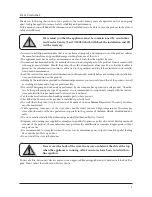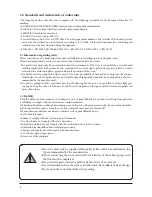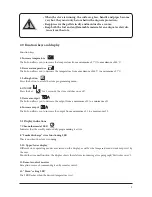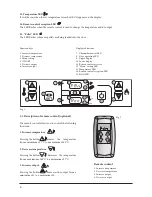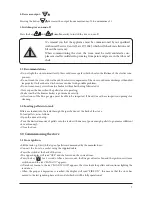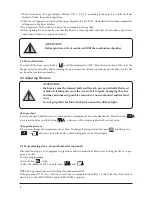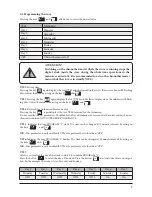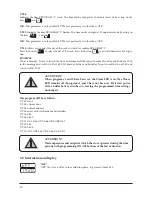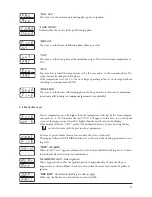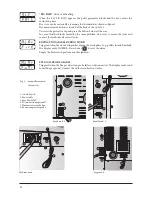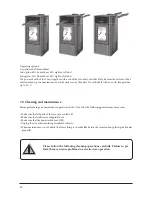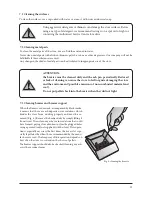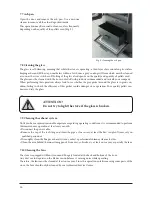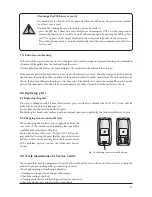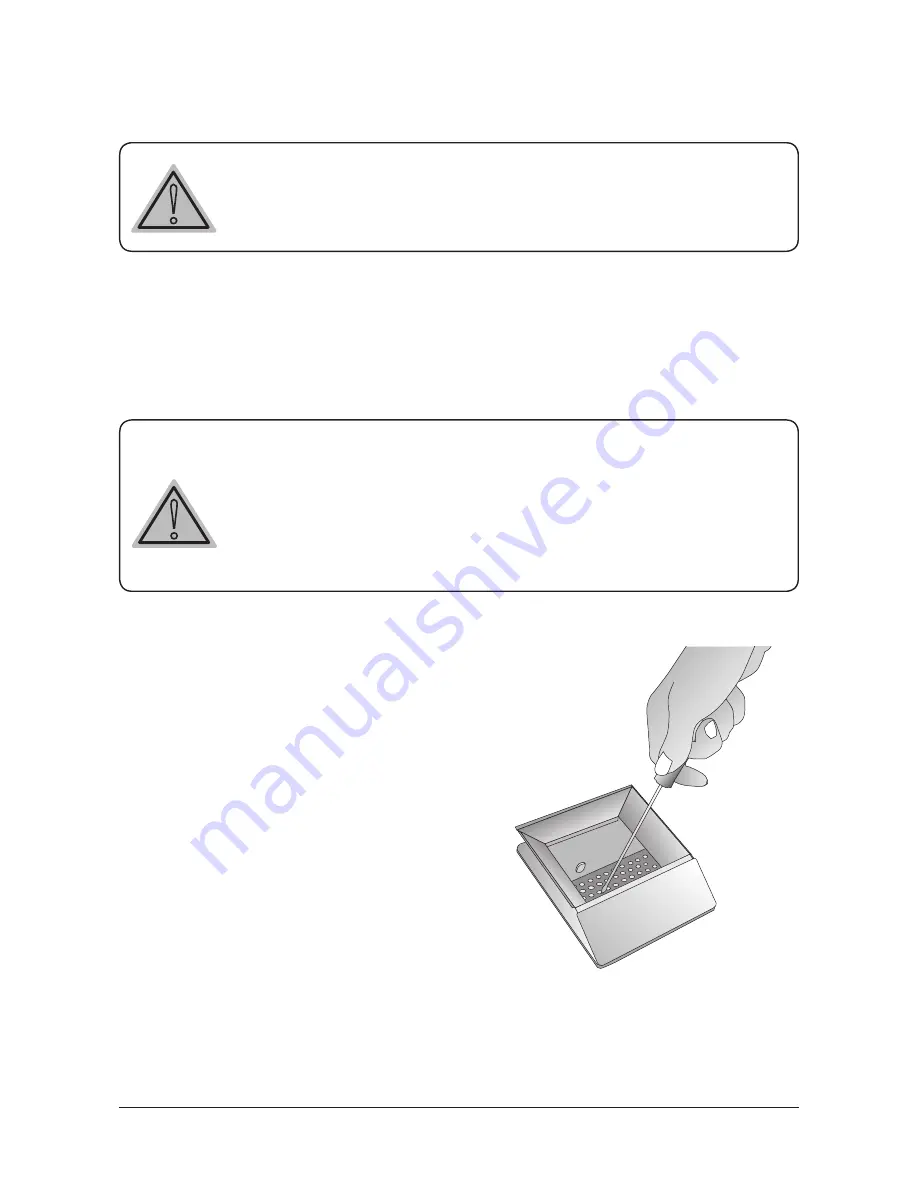
15
7.2 Cleaning metal parts
To clean the metal parts of the stove, use a soft cloth moistened in water.
Never clean metal parts with alcohol, thinners, petrol, acetone or other degreasers. Our company will not be
held liable if these substances are used.
Any change in the shade of metal parts can be attributed to inappropriate use of the stove.
Fig. 4: cleaning the brazier
7.3 Cleaning brazier and brazier support
When the flame is red or weak, accompanied by black smoke,
it means that there are ash deposits or incrustations which
hinder the stove from working properly and must be re-
moved (Fig. 4.) Remove the brazier daily by simply lifting it
from its seat. Then clean any ashes or incrustations that could
have formed, paying close attention to clear the plugged holes
using a pointed tool (not supplied with the stove). This opera
-
tion is especially necessary the first times the stove is lit, espe-
cially if pellets other than those recommended by the manu-
facturer are used. The frequency of this operation depends on
how often the stove is used and on the choice of pellets.
The brazier support should also be checked, cleaning any ash
-
es with a vacuum cleaner.
7.1 Cleaning the surfaces
To clean the surfaces, use a rag soaked with water or, at most, with water and neutral soap.
Using aggressive detergents or thinners can damage the stove surfaces. Before
using any type of detergent, we recommend testing it on a spot out of sight or
contacting the Authorised Service Centre for advice.
!
!
ATTENTION:
the brazier must be cleaned daily and the ash pan periodically. Reduced
or lack of cleaning can cause the stove to fail to ignite damaging the stove
and the environment (possible emissions of non-combusted material and
soot).
Do not put pellets back into the brazier when they did not light.



